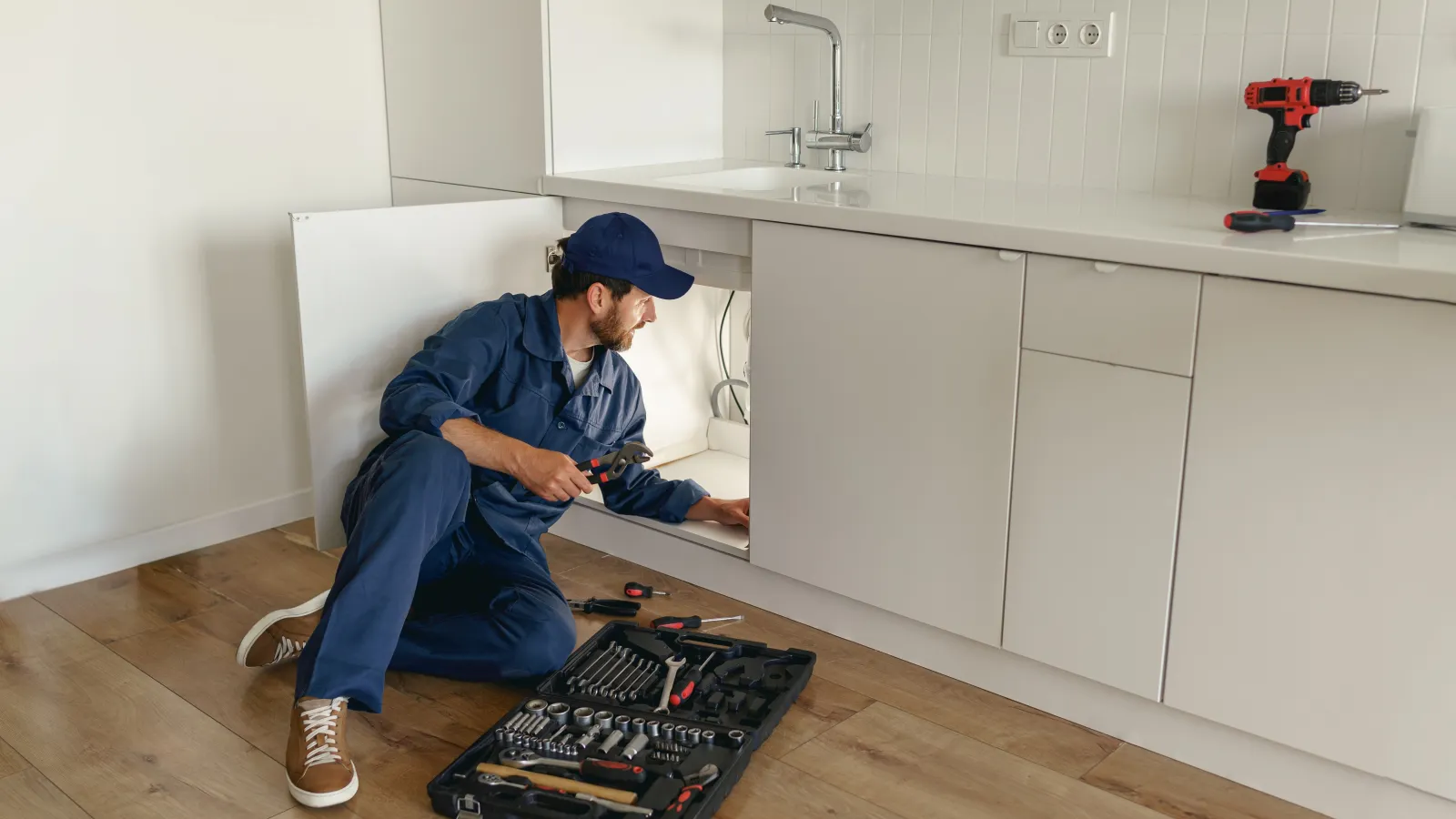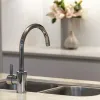If there’s one thing that’s true about most plumbing problems, it’s that they’re preventable.
From slow leaks to burgeoning sewer line clogs, small issues can eventually become major problems. By identifying and addressing those issues before they turn into plumbing disasters, you can avoid a lot of time, headache, and expense.
Best of all, you can just run the water and not worry about anything.
When our team performs annual plumbing maintenance, we focus on six different preventative tasks. After addressing all six and fixing small issues we notice along the way, your plumbing system is good to go for the rest of the year!
Here are the six items that should be on everyone’s annual plumbing maintenance checklist:
Item #1: Health and safety inspection
The last thing you need is a damaging supply line leak or sewer line issue that results in sewage backup or wastewater leaks. Those are among the biggest plumbing emergencies!
Thankfully, a simple health and safety inspection can identify emerging issues before they become emergencies.
Specific tasks include:
- Supply line inspection: We inspect all of the supply lines going to your fixtures. If any washers, o-rings, or hoses are corroding, we want to know about it so you can avoid a supply line leak.
- Shutoff valve inspection: Does the main water supply shutoff work? You’ll need it to in the event of a serious leak! We check this to make sure it turns properly and stops the flow of water.
- Sewer line camera inspection: A clogged sewer line is a big problem. A sewer camera inspection shows us whether anything is accumulating in the pipes and confirms whether the line itself is in good condition.
Why are these inspections so important? Because a leak in the supply line is a leak from water that is under pressure. If a critical part fails, you might find a lot of water in your living space very quickly! This water can cause damage, mold growth, and a whole lot of headache.
Sewer line clogs are also serious business. When you’ve got a bad one, your sinks and showers can’t drain. You can’t flush the toilet either.
With a blocked main drain, domestic life comes to a standstill. It’s something you want to avoid in the first place.
These inspections help you prevent those problems before they become problems. Nobody pulls their hair out over the sewer line blockage they never had to deal with!
Item #2: Water heater maintenance
You’ll often hear that water heaters are “set it and forget it.” That they really don’t need any maintenance.
This is… sort of true.
Water heaters tend not to act up as often as, say, toilets. But they are mechanical devices. As such, they can break or malfunction.
When we check your water heater, we’re typically looking for three things:
- Leaks: Are there any leaks around the fittings or, worse yet, from the tank itself?
- Temperature: Do you feel like your water is hot enough? Is it too hot? A typical water heater tank is set to 120 degrees. Is that where yours is set? Does the temperature drift?
- Expansion tank: First of all, does your water heater have one? Some plumbers install water heaters without expansion tanks. Not only is this a code violation in most places, it increases your chance for leaks and can reduce the lifespan of the water heater. We also check to see that the expansion tank is properly secured and not leaking.
If you’ve got a tankless water heater and are noticing diminished performance, it’s also a good idea to have it cleaned. In many cases, mineral buildup on the water heater components can make it hard for the unit to properly heat water.
Item #3: Water pressure analysis
Ideally, your water pressure will be anywhere from 50 to 70 PSI. Up to 80 PSI is generally ok.
In some homes, the water pressure is too high. Water pressure above 80 PSI can damage plumbing fixtures or, at best, reduce their lifespan.
High water pressure also reduces water efficiency and keeps your water bills high–and nobody wants a high water bill!
In homes where the water pressure is too high, we can install a pressure relief valve (PRV) to reduce the pressure of the water entering your home from the street. It’s a good idea to check the pressure every year to ensure that:
- Water pressure is within the ideal range
- The pressure remains consistent over time
- Your pressure relief valve is working (if you’ve got one)
How do we test it? With a pressure gauge! You can actually get one at any hardware store and test your water pressure periodically.
Item #4: Water quality test
An annual water quality test is intended to measure the amount of mineral content in your water supply. It’s not a water safety test–you can contact your water utility about those–but it’s still critical for protecting your plumbing system.
Why? Because water with heavy mineral content, aka “hard” water, can damage plumbing components and fixtures as mineral deposits accumulate.
This problem isn’t very common in the Atlanta area, but we do find homes with hard water from time to time. If you’ve got hard water, you might consider a water softener system that filters out the minerals.
Our test also shows the amount of chlorine in the water. If you’re concerned about highly chlorinated water, you might also consider a whole-house water filtration system.
Item #5: Toilet inspections
Toilets leak all the time.
Really, there’s just a lot of potential failure points.
Sometimes, they leak from the supply line. Other times, a toilet might leak from the bolts.
Annual plumbing maintenance includes an inspection of every toilet in your home. We’re looking for slow leaks that might one day become big leaks that damage floors and cabinetry. In some cases, unattended toilet leaks can cause mold growth.
Item #6: Inspect all shutoff valves
If you ever have a leak or need to work on a faucet or toilet, you know how important it is to have a functioning angle stop, or shutoff valve.
Each year, we make it a point to inspect every angle stop as part of regular preventative maintenance. It’s important that they work and that they don’t let any water continue to flow.
A faulty angle stop can be a disaster waiting to happen. As soon as you have an unexpected supply line leak, the first thing you’ll do is turn off the water at the angle stop. If it doesn’t work, you can’t stop the leak.
And if you can’t stop the leak, well…
Let’s just say you could have a huge mess on your hands! At least until you access the main water supply and shut off all your water.
But of course, it’s important to know whether that valve works, too (see Item #1). Also, main water supply shutoff valves are often difficult to access. If you can stop a leak by cutting closing an angle stop, you can usually stop it a lot sooner.
Regular plumbing system maintenance helps prevent leaks and damage
That’s what matters most, right? Nobody wants to deal with a plumbing emergency, and regular maintenance helps keep them to a minimum.
If you’re concerned about your plumbing system or just want the peace of mind that comes with a thumbs-up from an experienced plumber, become a PV Priority Plan member today!
Our team serves all of Metro Atlanta. Plumbing maintenance is annual and comes bundled with twice-yearly inspections of your home’s heating and cooling systems.
To learn more or sign up, call us today at (404) 798-9672 or schedule service online!





